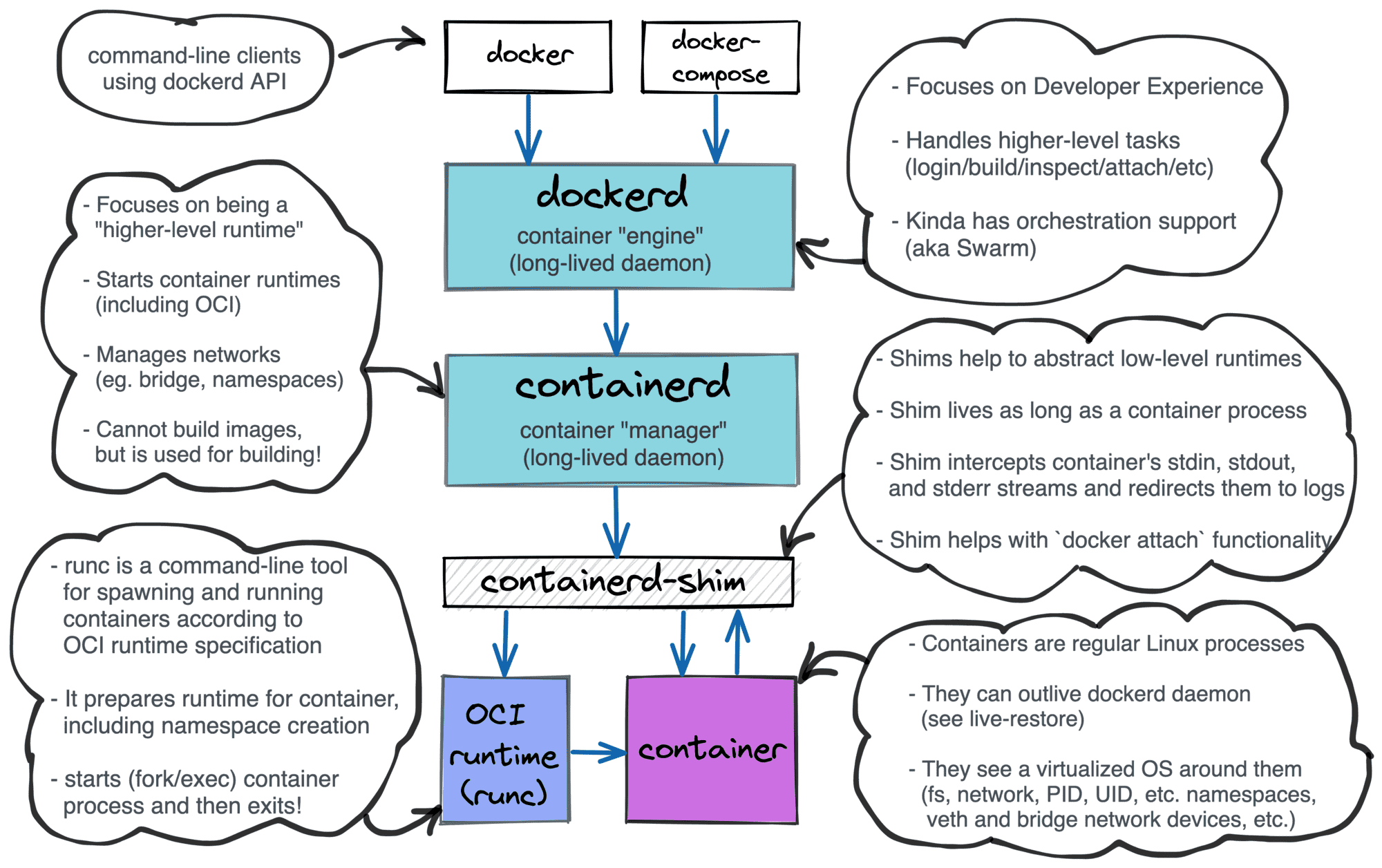Containers 101: attach vs. exec - what's the difference?
The difference between docker (or podman, or containerd) attach and exec commands is a common source of confusion. And it's understandable - these two commands have similar arguments and, at first sight, similar behavior. However, attach and exec aren't interchangeable. They aim to cover different use cases, and the implementation of the commands also differs. But still, it might be hard to remember when to use which command.
Since I'm no fan of brute memorization, here is my recipe of how I managed to internalize the difference. Long story short, connecting the dots between the knowledge of what containers really are under the hood and these two commands helped to grasp the difference almost instantly. And like any true understanding, it freed me from relying only on my memory and gave me a chance to extrapolate the knowledge on a similar tech such as Kubernetes 😉

